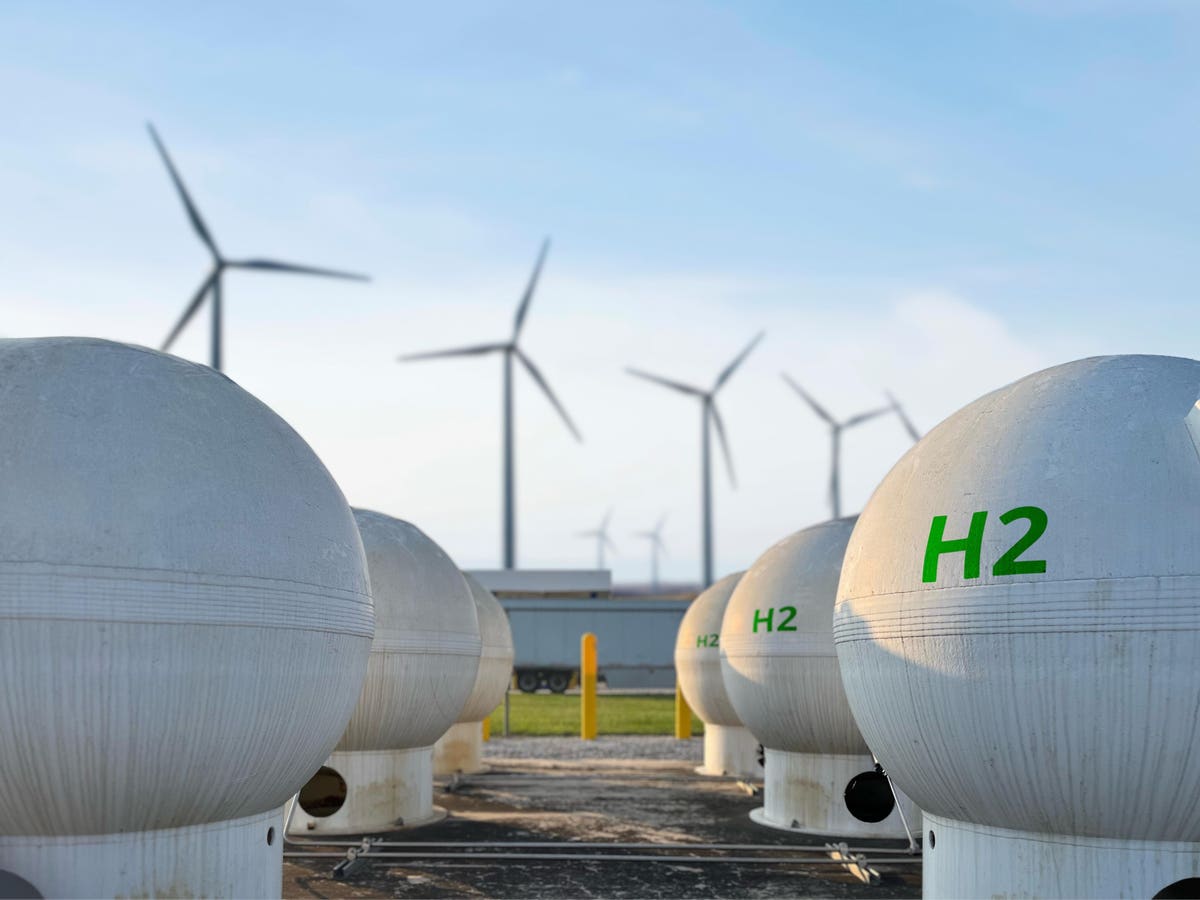The U.S. Department of Energy’s (DOE) $7 billion announcement launching seven “hydrogen hubs” is intended to fund clusters of projects to test different ways of making, storing, moving, and using a gas that could cut emissions.
However, the decision supports concepts that could ultimately worsen climate pollution and waste billions in public money if allowed to scale, such as making hydrogen from fossil fuels and burning it to heat homes.
Hydrogen hubs will cultivate soil for the nascent industry and scatter seeds of beneficial and harmful projects alike, but they’re only half the story. A looming decision will determine how the new 45V tax credit fertilizes the field—either choking valuable projects amid a mass of weeds, or growing a strong, domestic, truly clean hydrogen industry.
45V Tax Credit Will Determine If Hydrogen Is A Useful Tool Or Boondoogle
Congress directed DOE to fund hubs meeting a wide scope of hydrogen designs. With its hands tied, DOE selected proposals including making hydrogen from fossil gas with carbon capture in Appalachia and from existing nuclear power in the Mid-Atlantic, as well as using hydrogen to power buildings in the upper Great Plains and vehicles in California.
Zero-carbon hydrogen is the key to slashing climate pollution from tricky sectors like fertilizer, steel, and long-haul aviation. But fossil fuel-based hydrogen increases climate-warming methane leaks and faces limits to carbon capture. Hydrogen has no place in buildings, and electric technologies will be better for cleaning up pollution sources like cars and heavy trucks.
While the DOE’s hydrogen hubs award generous grants to some short-sighted projects, they are primarily learning opportunities. The federal government can still ensure truly clean hydrogen production.
The Inflation Reduction Act’s lucrative Section 45V Clean Hydrogen Production Tax Credit will drive the industry’s growth wherever the hubs are testbeds—and determine whether hydrogen becomes a legitimate tool to fight climate change or becomes the country’s next decades-long boondoggle.
The U.S. Treasury Department’s guidance on this vital policy is expected by the end of 2023, and it’s critical they get this right. The rules concern a technology called electrolyzers, which use electricity to split water into hydrogen and oxygen. This can make hydrogen either emissions-free or up to five times as polluting as today’s fossil fuel-based production methods. It all comes down to how Treasury accounts for an electrolyzer electricity use, as only the cleanest hydrogen can earn the highest-value subsidy.
Making truly clean hydrogen requires electrolyzers to use power from new, local sources of clean energy that generate electricity while hydrogen is being produced. Research shows cutting any corners would be disastrous for climate by causing fossil fuel power plants to run more often; it would also threaten the clean hydrogen industry’s long-term viability.
Special interests have pushed Treasury for weaker 45V rules, arguing stringent guidance would crush the hydrogen industry before it can sprout. But requiring new, local, time-matched clean power is cost-effective and wouldn’t slow the industry’s growth.
The European Union has already adopted these requirements. Renewable energy and hydrogen developers are also on board, urging the Biden administration to act similarly.
Hydrogen Hubs Can Be Laboratories For Industry’s Growth If Treasury Gets It Right
Looser rules would be a generational mistake, leaving the 45V tax credit to spur polluting hydrogen production projects that increase power prices and facilitate the fuel’s use where it doesn’t belong.
Worst of all, it would build an industry that requires indefinite subsidies to survive. Hydrogen would follow the path blazed by U.S. financial support for ethanol—never fulfilling its promise of reducing gasoline emissions but persisting due to political support for continued funding.
These rules also matter for the U.S. Environmental Protection Agency’s proposed regulations to cut power sector climate pollution. EPA proposes blending hydrogen with natural gas to cut power plant emissions—but this depends on the cleanliness of the industry stimulated by 45V.
Getting 45V right can put the clean hydrogen industry on a strong foundation. It would cut climate pollution from day one, help the industry outlive the subsidies that spur its development, and create lasting domestic jobs.
Hydrogen hubs will be laboratories that seed regional networks for the industry’s growth. But hydrogen is a means to an end in fighting climate change rather than an end in itself. Only projects making zero-carbon hydrogen and using it in high-value sectors like chemicals and steel are worth scaling.
It’s now up to the Treasury Department to ensure we cultivate a thriving hydrogen industry—not a field of weeds.
Read the full article here





